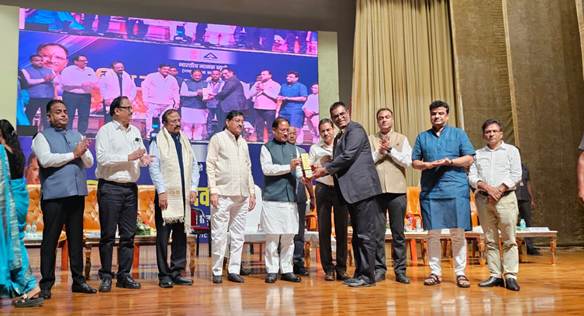Singapore City: India has developed its own indigenous networking infrastructure for air defense, successfully integrating radar systems from multiple sources into a unified nationwide grid without relying on foreign vendors, Chief of Defence Staff (CDS) General Anil Chauhan said in Singapore today. His remarks came during a high-profile interaction with global think tanks on the sidelines of the Shangri-La Dialogue, Asia’s premier defense summit.
Speaking on the topic “Future Wars and Warfare,” General Chauhan emphasized India’s self-reliant military capabilities, particularly during Operation Sindoor, a recent high-stakes operation where India’s air defense systems demonstrated exceptional performance.
“India has also built its own networking infrastructure for air defense without relying on foreign vendors and has integrated radars from multiple sources into a cohesive network across India,” the CDS stated, highlighting the successful deployment of the indigenously developed Akash missile system.
Pakistan May Have Used Commercial Intelligence, But No Real-Time Proof
The CDS also addressed the role of satellite intelligence in modern warfare, noting that commercial satellite access is now universally available, including to India’s adversaries.
“Pakistan probably used Chinese sources, but there is no concrete evidence of real-time targeting support,” he said, while underlining that India relied solely on its own satellite and surveillance systems during Operation Sindoor.
Key Features of Operation Sindoor: Network-Centric Warfare and Indigenous Strength
General Chauhan detailed the defining features of Operation Sindoor, including network-centric operations, cyber capabilities, misinformation campaigns, and dispersed force deployment. He said the operation was a practical demonstration of India’s strides in defense modernization.
“Modern warfare requires the convergence of tactical, operational, and strategic domains — across land, air, sea, space, cyber, and even time. The battlefield is no longer linear. We must now operate over dispersed, dynamic networks,” he explained.
He emphasized the shift away from large, static military platforms to flexible, mobile, and deceptive systems that can outmaneuver traditional threats.
Self-Reliance and Atmanirbhar Bharat Drive Modernization
Reiterating India’s push for defense self-reliance, General Chauhan pointed to the role of Atmanirbhar Bharat, which is helping galvanize startups, MSMEs, and large enterprises into building homegrown defense solutions.

“We have over 20 IITs and the world’s largest pool of STEM graduates. Give them a problem, and hundreds will work to solve it. That is India’s unrealized defense advantage,” he said.
He called for increased focus on automation and indigenous innovation, warning however that machine-based warfare, while reducing human costs, could dangerously lower the threshold for entering into conflict.
On Operation Sindoor: “We Responded Within 3 Days”
When asked about potential losses during Operation Sindoor, the CDS remarked:
“No operation is perfect. What matters is how you respond. And we responded effectively within three days, without further casualties.”
He also cautioned against prolonged mobilizations, noting their economic toll on the country.
“India has paid a heavy financial price for long-term mobilizations. We disengage quickly post-operations because extended wars hurt national growth — a vulnerability that some of our adversaries might exploit,” he said.
Final Thought: The Future of Warfare Is Here
General Chauhan concluded by reflecting on how war has evolved:
“Modern warfare is no longer about just firepower or troops. It’s about networks, data, deception, speed, and integration. The battles of tomorrow will be non-linear, decentralized, and digitally interconnected — and India is preparing to meet those challenges head-on.”






